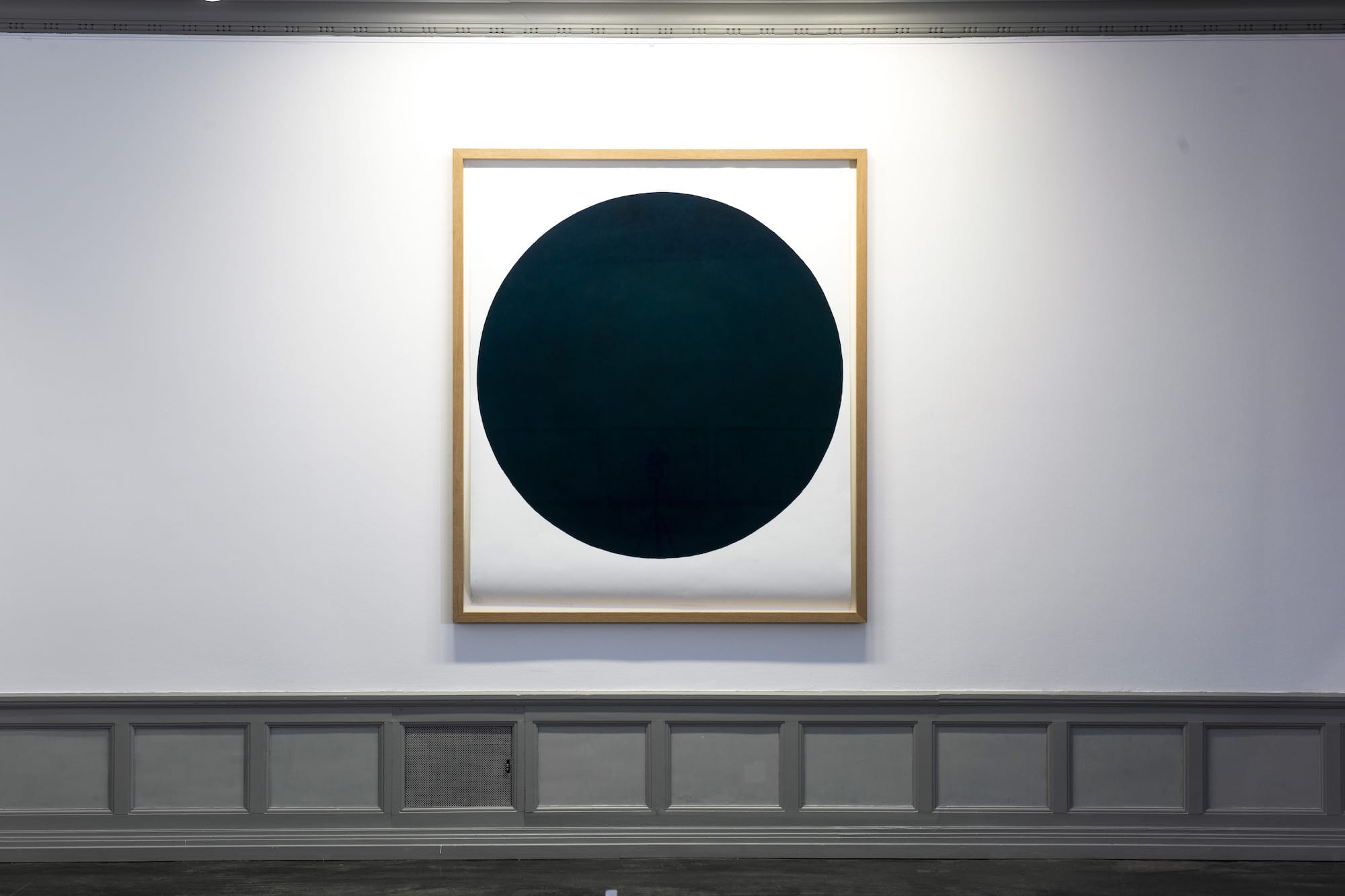Room for personal experience
One of many reasons to be interested in art, from my perspective, is to explore the contact point between art and oneself. What happens when you encounter an artwork? What kind of feelings and thoughts are awakened? How does art relate to who you are, how you feel, what you perceive and what you know?
Many critics are not comfortable in presenting their own subjective opinion in describing the value of art. Art critic Kjetil Røed is one of the few who is. On several occasions he has emphasized that the viewer’s personal reaction should be given autonomy when experiencing art, and in conversations about art. 1 By autonomy, here we mean that the personal emotional interaction with a work is allowed, even encouraged, and is valued on the same level as art historical knowledge. A big delusion when it comes to the art historical canon, says Røed, is that there is no allowance to be influenced by the subjective, “as if subjectivity erodes argumentation and thinking”. 2 However, to give personal experience validity when meeting a work of art is not equivalent to claiming that the personal has to be deeply emotional, or that the individual response is the only voice and tool for interpreting an artworks value. The experience of coming into contact with art can be seen as a dialogue between one’s own personal space, where individual experience and sensation is given priority, and the larger art world with its established discourse and historically situated knowledge.
- 1. Kjetil Røed, «Ser du det jeg ser?», Samtiden 4 (2013); «Nødvendigheten av å tenke en demokratisk kanon», Samtiden 2 (2017); Kunsten og livet. En bruksanvisning (Oslo: Flamme forlag, 2019), F379.
- 2. Kjetil Røed, «Nødvendigheten av å tenke en demokratisk kanon», s. 97.
Because every human’s individual experience is unique, we meet art from different entry points. My own art experiences are characterized by, firstly, that I did not grow up in an artistic environment, and secondly, that embedded in me is my education as a social scientist and its training in directing and analyzing social processes. That is why art that is related to the relational, social, political and conceptual areas of life is often easier for me to “grasp”, easier to relate to, compared to for example abstract art. One of many examples of art that I find easily relatable is the French artist Sophie Calle´s solo exhibition Take Care of Yourself at Stavanger Art Museum in 2013. The exhibition immediately ignites several trains of thought and emotional associations. The idea and the execution of the exhibition came after Calle was dumped by her boyfriend. Instead of getting angry, or mourning in private, Calle initiated an art project that made the event and the experience of it a collective affair. She sent the break-up-letter she had received to 107 women in different professions. All of them contributed to the project with opinions and interpretations of the letter and the situation. Some of the responses formed the exhibition. I experienced Take Care of Yourself as a conceptual work that resonated with a deeply personal experience. The exhibition – unfolding through text and image, through polyphonic interpretations and paths of thought – was experienced as generous, rich with meaning, multifaceted and intuitively available.
This is the backdrop of my actual reason for writing this text, which is about both my own difficulties in describing art that does not unfold in its social complexity, and more specifically about my fascination for Margrethe Aanestad´s artistic voice. Compared to the exhibition Take Care of Yourself, I would never use the term “generous” to describe Aanestad´s abstract and colorfully nuanced pieces. Maybe the difficulty in verbalising fascination for abstract works stems from my lack of art historical references, but it may also be that the physical sensations for me are far less intuitive than artworks that are more concretely socio-politically relevant.
Fragile ethereality
For example, look at the circles below.
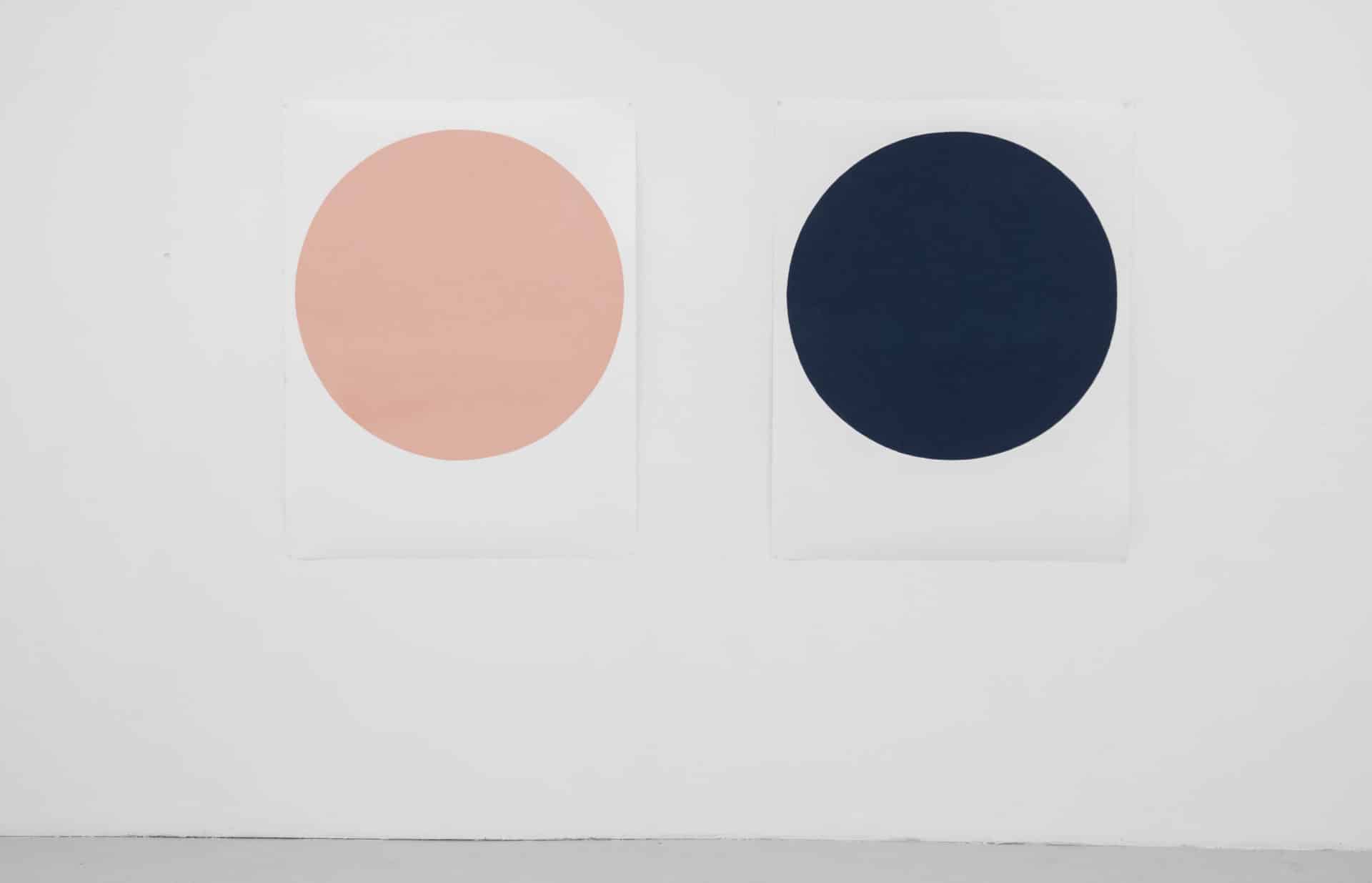
The works are titled Eternal VI and Eternal III (2018). They are made in chalk pastel on paper, size 125×97 cm.
I find it strange to say that those circles are strong. Strange, because I have enough people around me that would never quite say that . But I think they are strong, and beautiful. I can stare myself blind at those. When I get close enough, it is as if I can feel the materiality in the works with my eyes. I can see the movements of the pastel crayons. I can see a pattern. To stare into the circles is calming.
Look further at the works below, at the dancing lines.
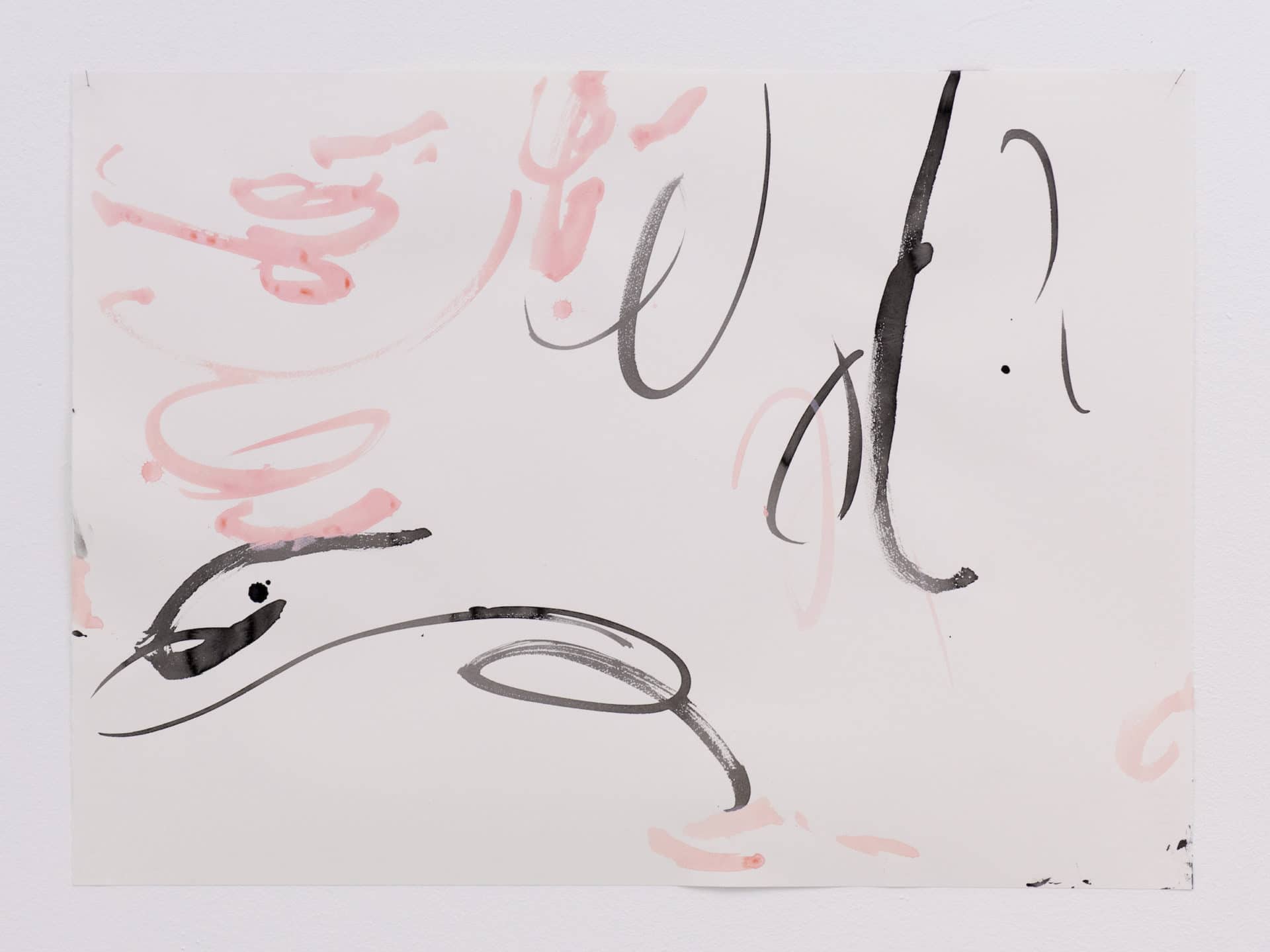
This work is entitled Tales of Traces of Glimpses II, Part 2 (2018). In this work, we see lines, or waving strokes, flying over a piece of paper. The strokes are not connected, they just fly around. Some alone, others whirling into each other. Here there is no frame, only a barely defined edge. It’s like they are in a free fall, a state of no limitations.
The way around feelings
I saw those works for the first time in the “Aanestad-room” which was a part of the group exhibition Frail Mighty at Kunsthall Stavanger in 2018. It felt semi-sacred. I have not told the artist this yet, or others for that matter, because I did not know what to say.
I just knew that I wanted to stay in the gallery surrounded by the artworks for as long as possible. I wished for a sofa in the space, a chair or a bed, so that I could stay there indefinitely, happily relaxed. I started to wonder why I felt this way. Why the works resonated so strongly within me. Compared to Sofie Calle´s exhibition, which is filled with available and easily graspable associations, the abstract works by Aanestad does not offer their treasures freely. They ask something of the viewer in return.
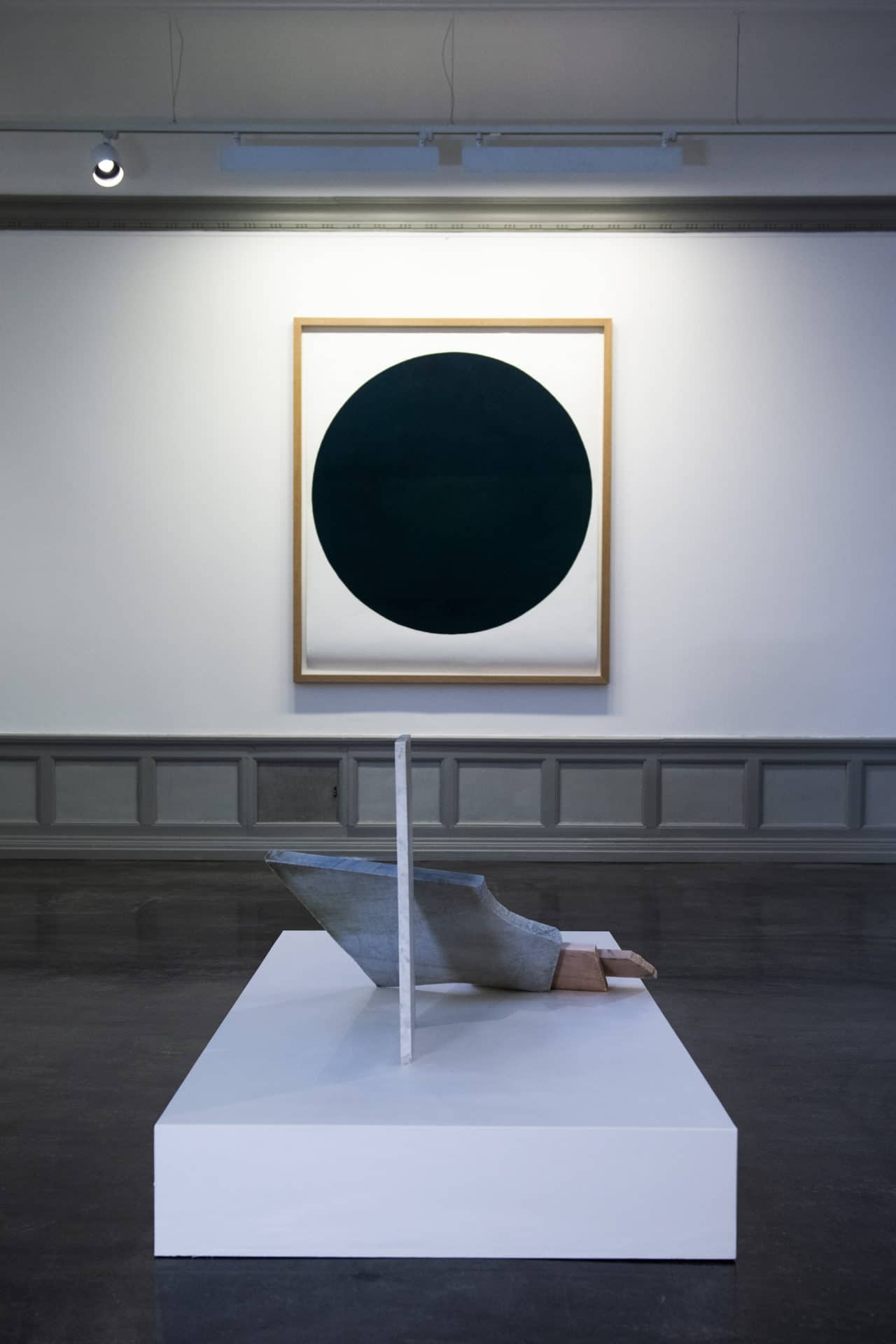
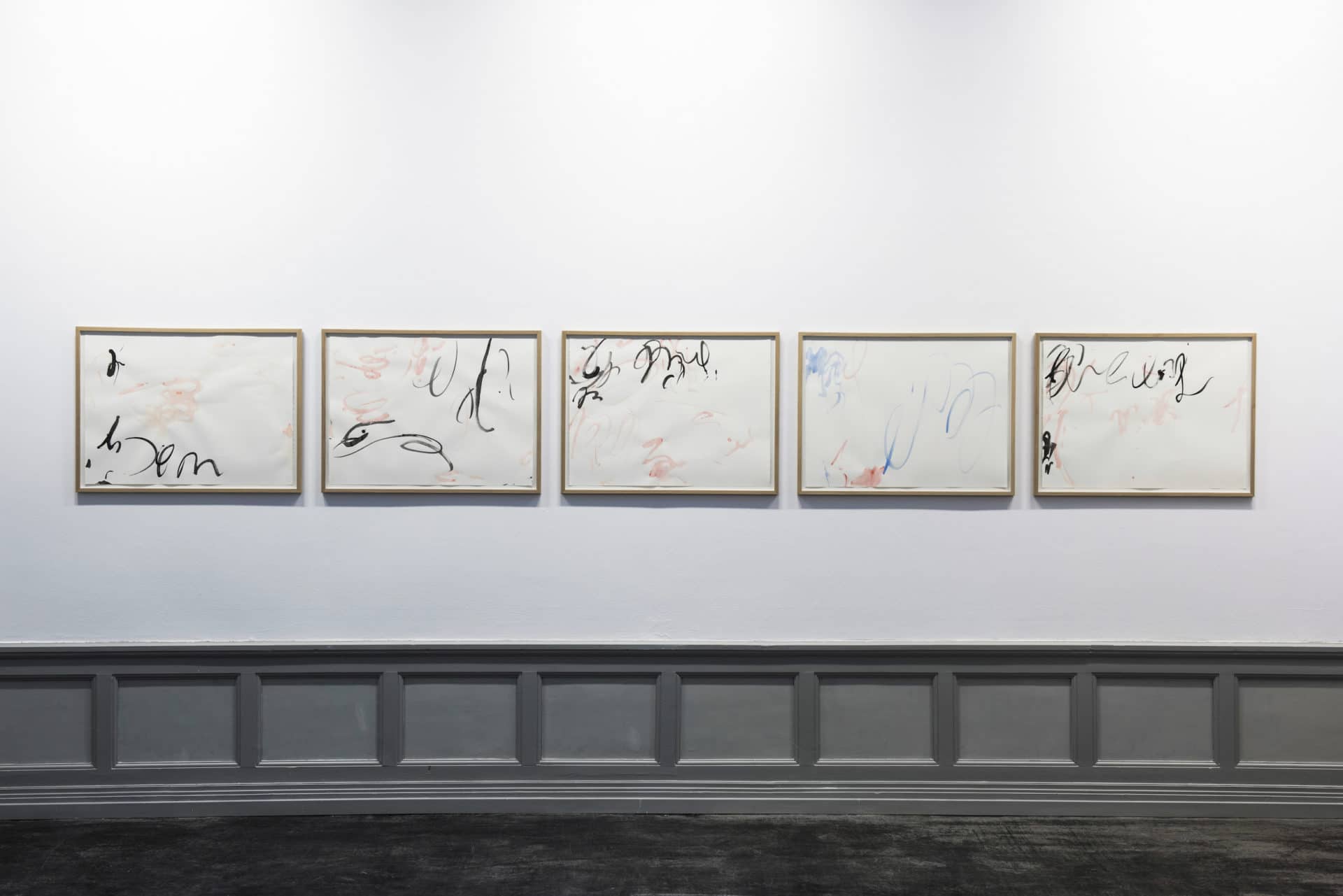
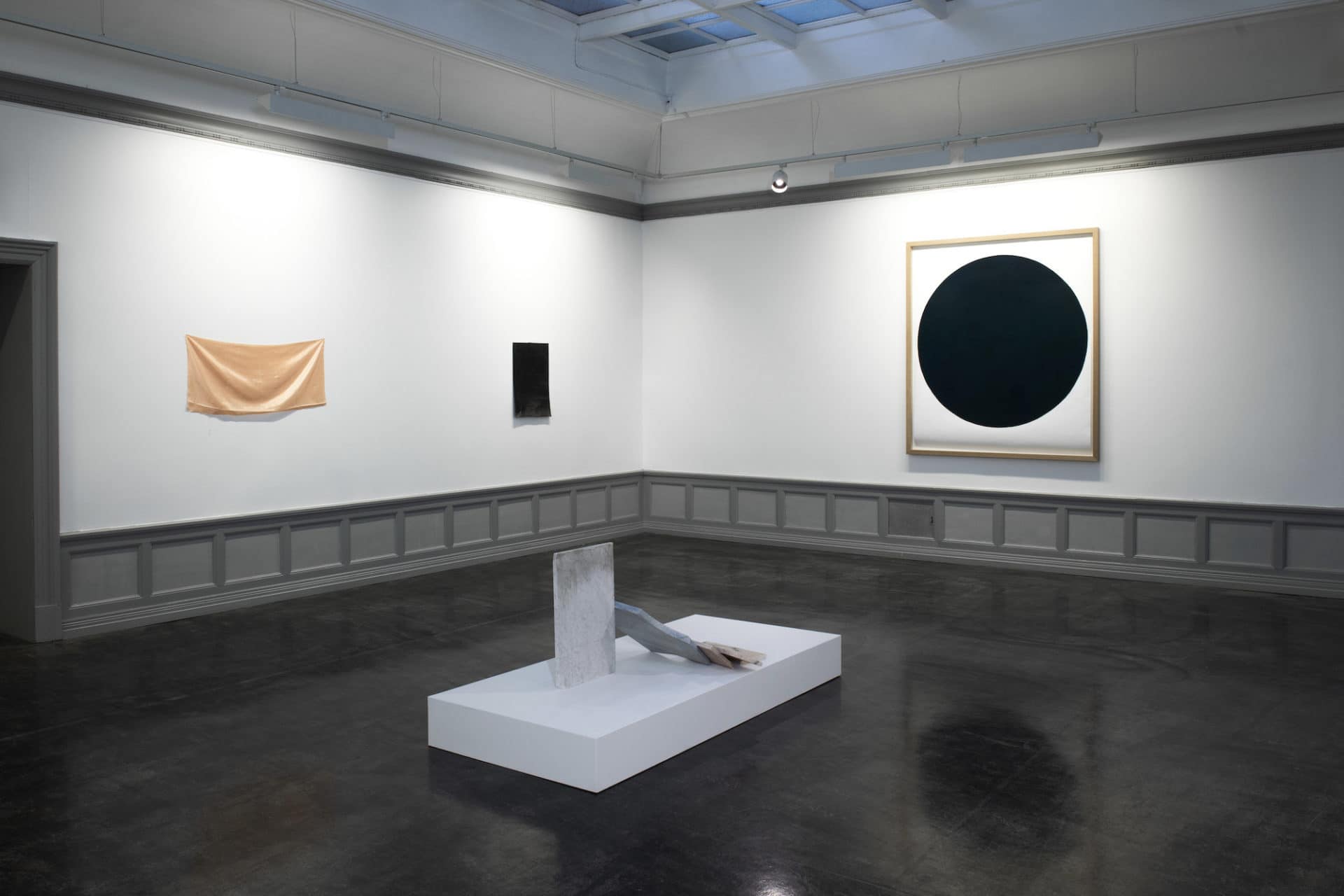
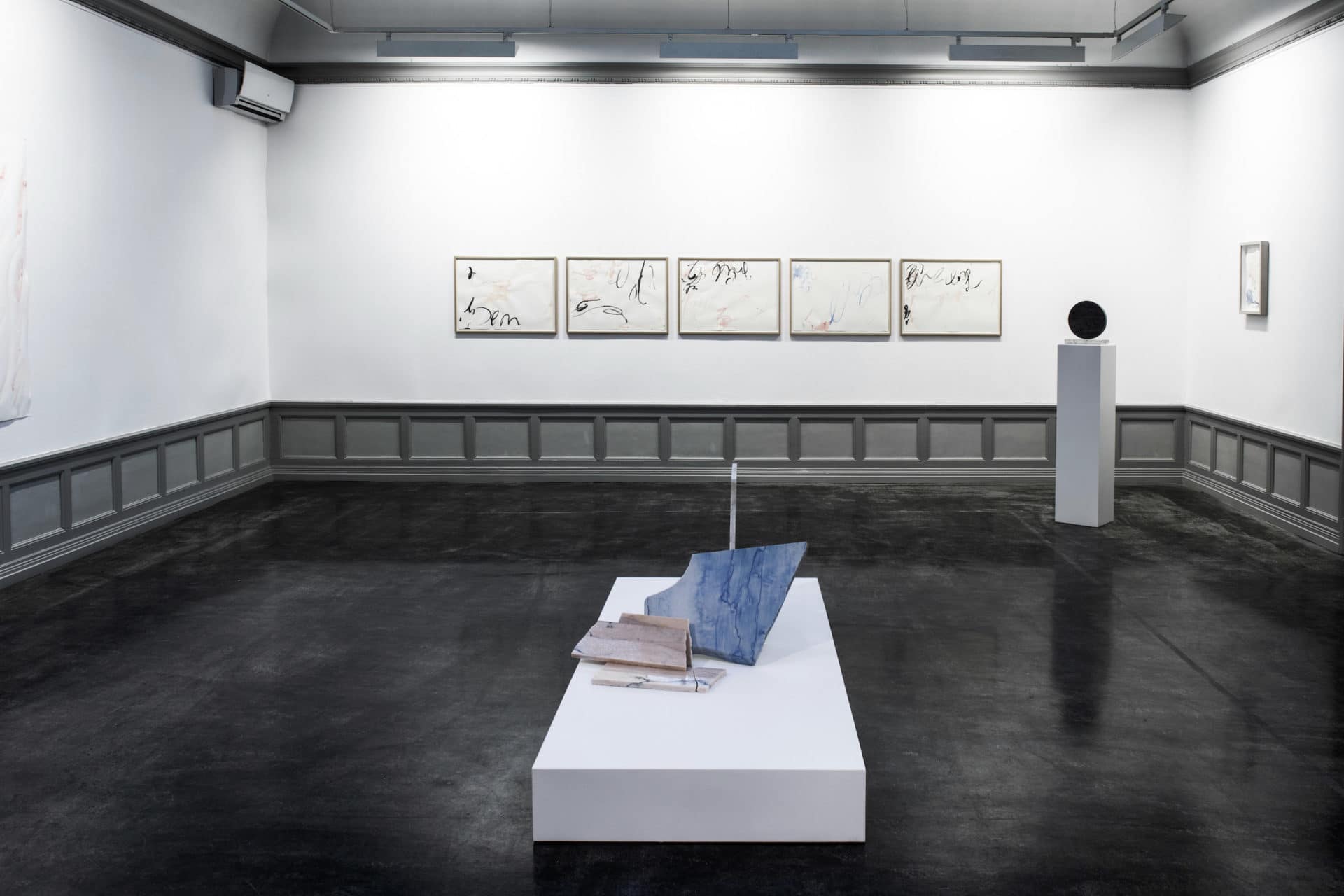
If I were to try to explain the emotions that were awoken in me while looking at Aanestad’s paintings, I would say that I had a feeling that everything – yes all of life – is incredibly fragile and at the same time, an effortless dance. The works express the truth that foundations can collapse, that equilibrium can be shifted by the slightest breath. I was made aware that the foundation on which we stand can evaporate, and yet a fragile gentleness surrounds us. Simultaneously, the works evoke feelings of another sense of easiness, an effortlessness that is not frail, but rather lovely and freeing. It reminded me of the feeling of being able to fly in my dreams. It is as if the limitlessness and weightlessness in the artist’s strokes provides air under the viewers’ arms and lifts us a few centimeters above the ground, and leaves us there, hovering. It is a lightness that holds us up, an appealing and abiding lightness.
Referencing Jacques Ranciére’s writings, we could say that Aanestad´s artistic expression transferred through the material objects she uses opens new rooms of sensation within the viewer, and through that sensation new ways of perceiving the world are created. 4
- Jacques Rancière, Sanselighetens politikk, oversatt av Anne Beate Maurseth (Oslo: Cappelen, 2012)
Art critic Anne Therese Tveita wrote in her review of the exhibition Frail Mighty that a sense of delicacy was balanced against steadfast determination and that the rooms of the exhibitions quivered with this and other similar contradictions in various explorations of personal and universal breaking points. I agree that Aanestad´s works communicate a two-sidedness. Her sensitivity to color and material communicates a fragile balance; on the one hand, an uplifting weightlessness, and on the other hand something light so fragile that it can easily be destroyed.
Along with Røed, I don’t see the point in strictly dividing emotional responses from analytical thinking when it comes to experiencing art. I am sensing an artwork, I am thinking an artwork, and those two different ways of perceiving are merging into each other to create a unique understanding of the work. I do not leave the emotional register nor analytic capacity behind, they are both on board. But, I do think that different artworks activate emotions and intellect in varying degrees, and maybe in some works calls out to the former before the latter.
Ronan Keating
At the contact point between Aanestad´s work and myself, it is the emotional register that gets activated first. This makes me recall a poem by Audun Mortensen, who writes humorous, distinctly contemporary and often conceptual poems. The title of Mortensen’s poem, from the collection Aaliyah (2011), leads us towards a consideration of conceptual art. The first part goes like this:
sentences on conceptual art (after ronan keating)
- it’s amazing how you can speak right to my heart without saying a word, you can light up the dark
- try as I may I could never explain what I hear when you don’t say a thing
- the smile on your face lets me know that you need me
- there’s a truth in your eyes saying you’ll never leave me
- the touch of your hands says you’ll catch me whenever I fall
- you say it best when you say nothing at all
(…)
Conceptual art, as with abstract art, is often perceived as not giving anything away for free. However this is exactly what it does. Mortensen’s silly Ronan Keating-ish point, which also here becomes my point, is that you can take the risk of this art speaking directly to your heart, without having to explain, like this boy band artist sings, with the aim of creating ties of love between human beings. So, to quote Ronan Keating: artworks can speak directly to the heart without saying one word. That is why it is more difficult, at least for me, to attempt to describe the wordless – to verbalize an artistic experience that touches the deeper self.
The attempt in any case necessitates that the art field and the viewer (you!) first allows and validates the personal experience.
Editors Note: This essay was originally published in Norwegian on January 8, 2020. You can read the original text here.
Merete Jonvik is a social anthropologist and sociologist. She has a PhD. in cultural sociology from the University of Stavanger, Norway (2015). She works and lives in Stavanger, as an associate professor at the Department of Media- and Social Sciences at the University of Stavanger. Her research areas are art sociology and cultural sociology, social inequality and urban development.


